Introduction
FiiO is no stranger anymore in this ultra portable DAC/amplifier segment and they have made their mark with releases of the KA series such as the KA1, KA2, KA3 and the KA5 which are marketed with a collaboration with their sister company, Jade Audio that promises a high end quality products in a more reachable price range. FiiO in 2024 has been planning to make their stand in this dongle segment and decided it is time to release a flagship of the KA series with a new line of numbering, the KA17. Equipped with the all new Sabre DAC chip along with their usual partner in crime THX amplification chipset, they are loaded with innovations and a never seen before desktop mode which uses an extra external 5v to provide more power in miniature setup.
Ryan from Red Ape Headphone Store has kindly provided us with a loaner sample of this mini monster, the KA17 for an honest review and we are truly honoured to do our part in reviewing them. Do check them out for FiiO products as they are the official distributor here in Malaysia.
Functions & Specifications
Before we start the review, here are the specifications and features of the FiiO KA17;
- DAC: ES9069Q*2
- USB decoding: XMOS XU316*1
- Amplifier: THX-78+*2
- Colour: Black/Blue
- Weight: 33.5g
- Dimensions: 64×27.7×12.7mm
- Channel balance: <0.2dB
- Gain level: L/H
- Display: 0.91-inch OLED display
- Max supported sampling rate PCM: Supported up to 768kHz/32bit
- DSD: Supported up to SD512 (Native), DOP256
- SPDIF: Supported up to 96kHz/24bit
- Recommended impedance: PO: 8~150Ω
- BAL: 8~300Ω
Output power 3.5mm single ended, high gain, DC mode ON
L+R≥320mW+320mW (16Ω, THD+N<1%)
L+R≥270mW+270mW (32Ω, THD+N<1%)
L+R≥30mW +30mW (300Ω, THD+N<1%)
Output impedance:<1Ω
Crosstalk: ≥75dB
Output amplitude: 3Vrms
THD+N & Noise:<0.0015% (1kHz/-15dB@32Ω)
SNR: ≥123dB (A-weighted)
Frequency response: 20Hz~50kHz: damping<0.5dB, 20Hz~20KHz: damping<0.1dB
Noise floor:<2.1uV (A-weighted)
Output power 4.4mm balanced, high gain, DC mode OFF
Output power: L+R≥460mW+460mW (16Ω, THD+N<1%)
L+R≥650mW+650mW (32Ω, THD+N<1%)
L+R≥90mW+90mW (300Ω, THD+N<1%)
Output impedance:<1.5Ω
Crosstalk: ≥114dB
Output amplitude: 4.5Vrms
THD+N & Noise: <0.0004% (1kHz/-8dB@32Ω)
SNR: ≥126dB (A-weighted)
Frequency response 20Hz~50kHz: damping<0.5dB
20Hz~20KHz: damping<0.1dB
Noise floor <2.2uV (A-weighted)
More information can be found on FiiO parameters site for the KA17;
https://www.fiio.com/KA17_parameters
Retail Price & Where to Get
The FiiO KA17 can be purchased at Red Ape Headphone Store
Shopee : https://invl.io/clkxgcc
Packaging & Accessories
The FiiO KA17 comes in a beautiful hard rectangular box and has a premium, futuristic box that has the typical industrious packaging. Inside we will find a complete accessories box that includes the KA17 alongside a USB C to C cable, a USB C to type A adapter, some paperworks and a most appreciated leather case. A very well packaged box with all the things you need and well worth the asking price.

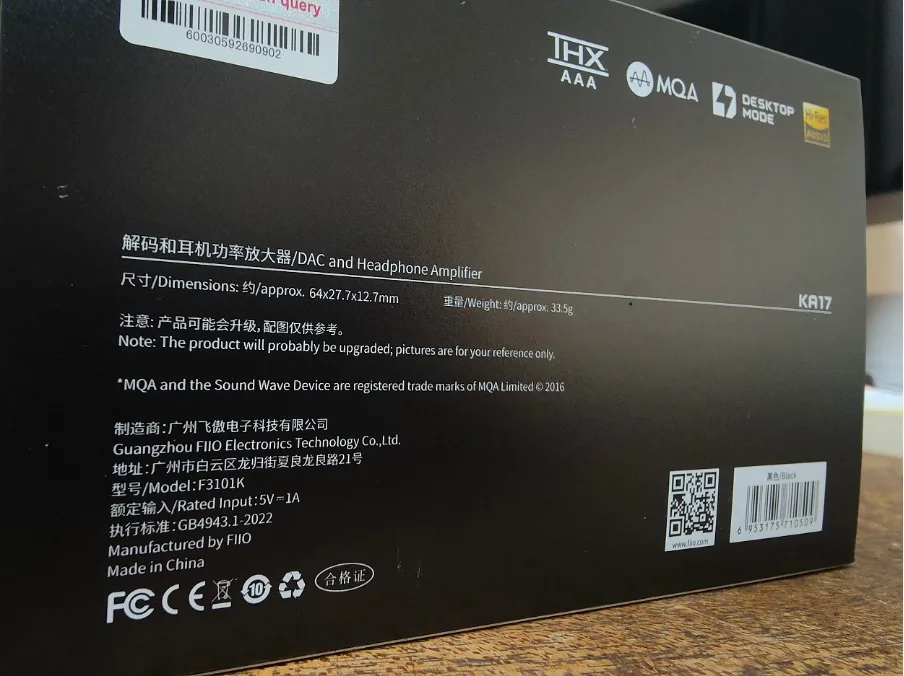
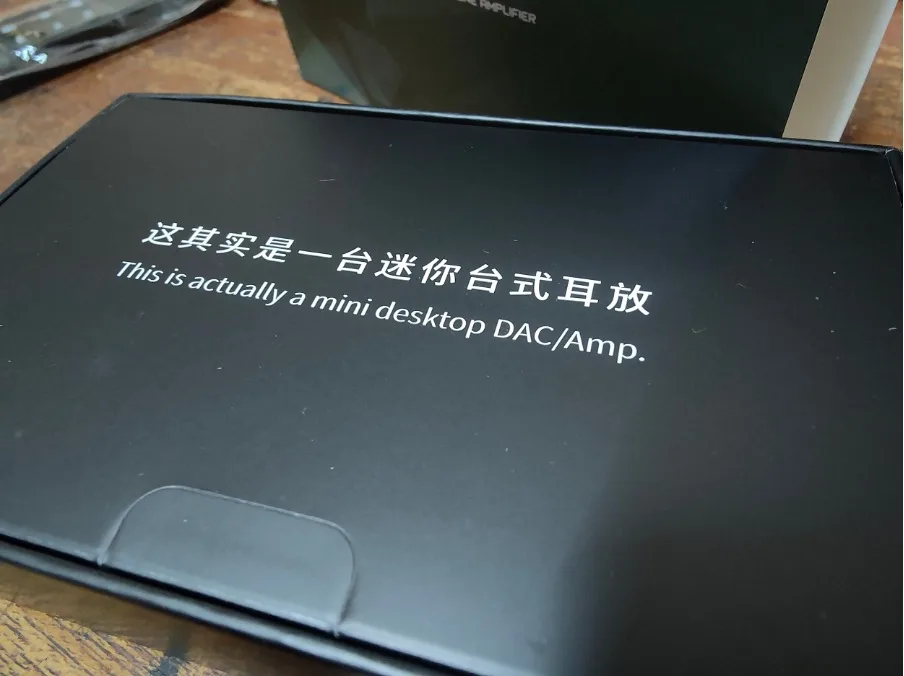
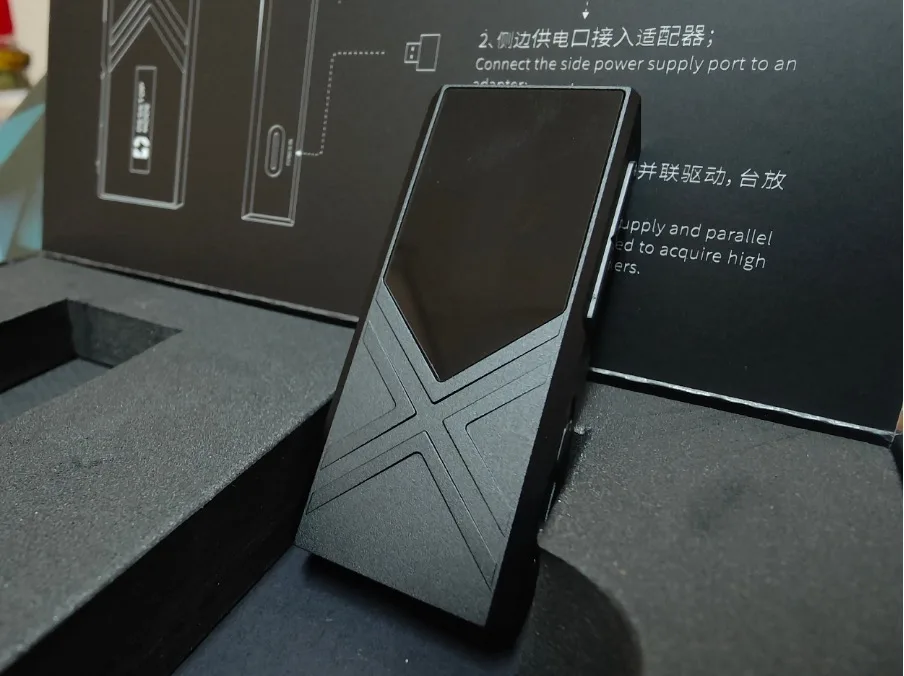


Design
The design of the KA17 is futuristic and techy with a rather large OLED screen that is informative and clear. It has a sleek aluminium body with an ‘X’ on the body to give the KA17 some design flair. It has a small, slim and lightweight body that is perfect for outdoor usage.

Inside the KA17 is packed with innovations such as a separate digital and analogue board to reduce interference, a 3 stage 10-rail power supply design to ensure every electronic part of the unit is supplied with ample power, a 16 core XU316 XMOS chipset which is one the latest digital receiver chip with low latency, stability along with a great compatibility with most files, a 10 level PEQ for sound personalization and all these can be configured within the unit itself with the intuitive dot-matrix OLED screen. Below are the functions of the KA17;
1. GAIN: Select high or low gain.
2. FLT: Digital filter, 8 types of filters available.
3. VOL-STEP: Volume level control, 60 and 120 levels available.
4. ADJ-L/R: Channel balance settings of the left/right channel.
5. DIMMER: Dimmer setting of the display.
6. MQA: Enable or disable MQA.
7. EQ: Equaliser setting.
8. MAX VOL: Maximum volume limit.
9. ROT-DISP: Rotate the display. It can be set to rotate 180 degrees.
10. OFF-DISP: Set the time that the display can be auto-locked if there is no activity.
11. U-AUDIO: Select between USB2.0/1.0.
12. LANGUAGE: Chinese and English available.
13. VERSION: Firmware version display.
14. RECOVER: Recover default settings. The KA17 is fitted with 2 of the all new Sabre ES9068q chipset that has one of the lowest signal to noise ratio in the DAC chipset realm. The amplification is done by 2 pieces of THX-78+ amplifier chip which is quite amazing as it is packed in this compact body and FiiO has stated it has a pure balanced output with a maximum 650 mv of power in desktop mode.
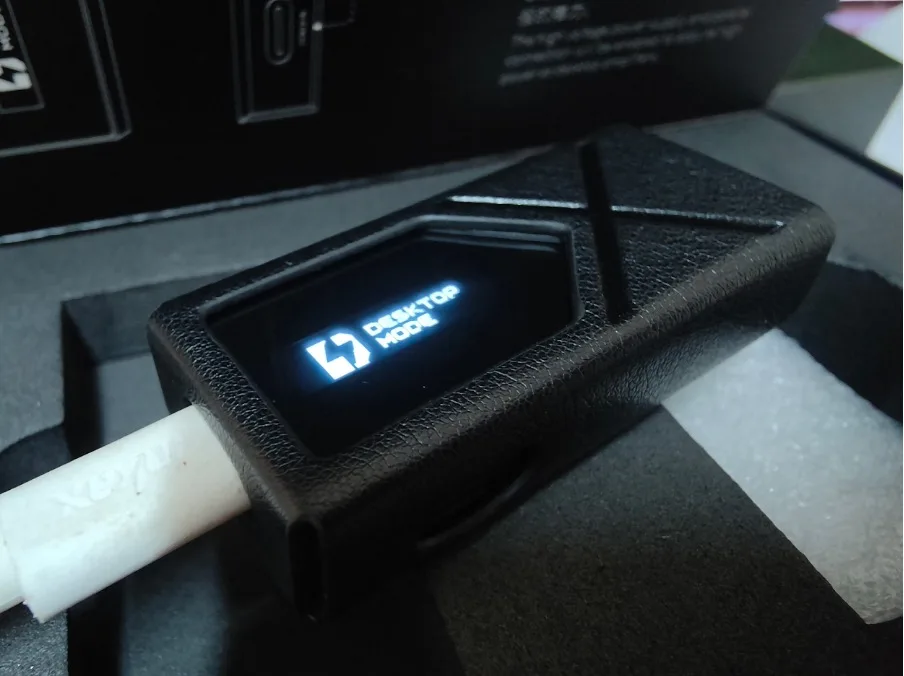
One of the main attraction of the KA17 is there is 2 sets of USB type C input where at the bottom is the usual digital input and the side is mainly dedicated for a 5v input to enable a full desktop mode supplying a dedicated power input for the THX amplification for extra driving power and a cleaner sound. Amazingly well implemented and they indeed do have significant improvements along with lessening the power drain from the source.
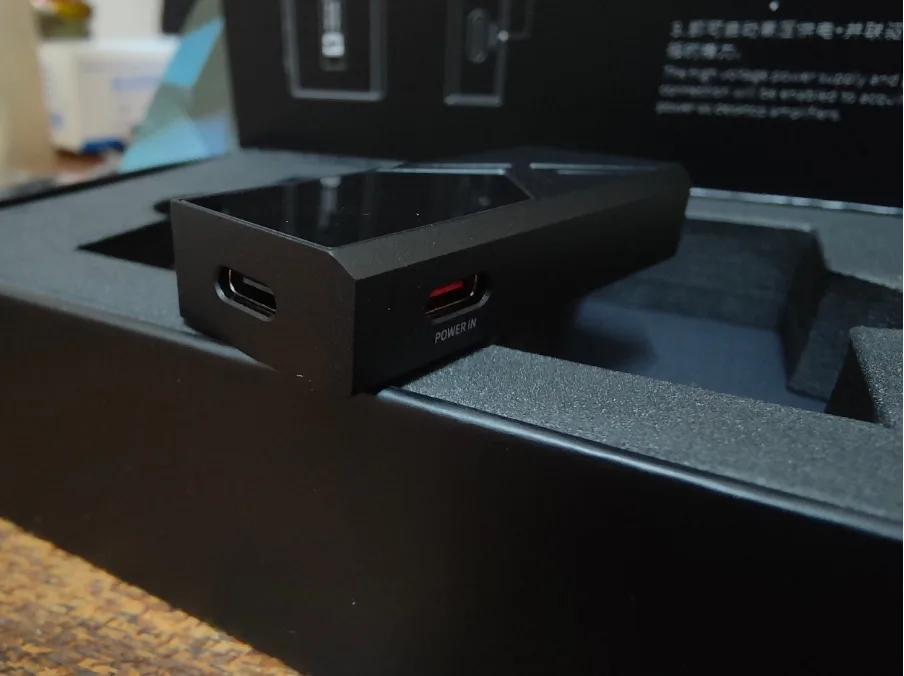
On the other side of the unit we will find a volume rocker, a multifunction button and a slider to enable the desktop mode. The desktop mode will be enabled even without a 5v source connected but it will drain the source battery quite evidently.

On the output side we will have 2 types of output which includes a single ended 3.5mm and a 4.4mm balanced output.
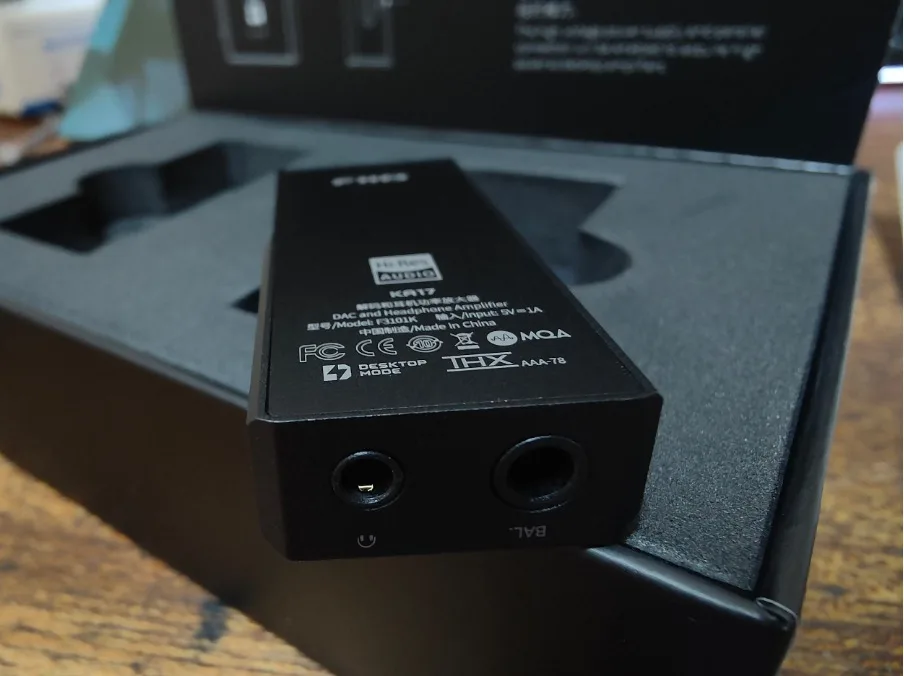
The KA17 has quite a decent medium battery drain that is similar to the likes of Truthear Shio, Aune Yuki, Questyle M15 and Colorfly M1P on the low gain without the 5V input and with an external 5v input, the power drain is significantly less which is great to conserve the battery of the source.
Gears Used for Comparisons
FiiO Q7.
Hiby FC6
FiiO KA3
Questyle M15
Colorfly M1P
Rudistor RP8
Sennheiser HD800s
Moondrop A8
Dunu Luna
Hidizs MS3
Dunu EST112
Letshuoer S15
Blur daBass custom earbud
Toneking TO600
Songs list
Tone and Presentation
The tone of the KA17 is a neutral warm type of sound that has none of the usual Sabre glare, instead they are smooth, lush and fun while having a decent overall detail retrieving capabilities. They do have a mild bright tonality to them that pairs well with their warm sound and they provide a clear sound that is quite intimate to listen to. They have a good dynamic response that gives music a good amount of note weight along with a wide frequency response and they do possess good extension on both ends of the spectrum that provides an airy presentation that is pleasing.
Soundstage
The soundstage of KA17 is good as they are wide and has a decent height to them but at this price range, they are up against serious competition that gives a slightly vast soundstage like the Aune Yuki and Ibasso DC04 to name a few. That being said, the soundstage here still has a good depth with a rather airy, medium sized headroom. They have great immersive sound that is holographically vivid and accurate which is suitable even for gaming and movies.
Separation and Timbre
Separation of the KA17 is excellent as they are able to have a great left to right separation with no crosstalk especially on both their balanced output. Texture and layering here is great as they are able to keep with fast tracks such as EDM or metal and timbre here is superb with a clean, clean with a good natural sound that is accurate with a deep yet lively sound. The KA17 does have a very nice balanced tone of a bright sound with a great depth.
Drivability
The driving power of the KA17 lies where its strength is, rated at a maximum of 650mW at 32 ohms with high gain and desktop mode on which is amazing for such a small product rivalling FiiO’s own M11 Plus. Needless to say it is sufficient in driving most of the IEM and lower impedance headphones with ease and finesse but they still struggle to drive demanding headphones such as my HD800s although loudness is adequate but their full potential isn’t unlocked. The KA17 also has a low noise floor with a black background sound that is suitable for sensitive IEM such as balanced armature IEMs.
The Bass (Low)
Bass that the KA17 produces is a balanced, neutral bass that has a good mid bass loft that gives a textured, fast bass response. It has a good amount of energy that provides a tight slam while still remaining its natural, organic state. Bass at times will sound a tad thinny due to their tight bass response but music still has some body and weight to them without being too dull. The details here are great as they do not sound bloated or fuzzy, instead they provide a clean and clear bass response that is organic. The amount here isn’t suited for bassheads as it is more suited for those seeking for a clean, pure bass that has the correct amount. Sub-bass here is mediocre with a soft rumble that has an early roll off but they are still present and extend rather deep. Bass extension is average but it is still good with a slight roll-off at the end but sub-bass has a decent extension with a deep rumble and a good amount of rumble.
The Mids
The midrange here is a neutral midrange that is balanced with a hint of warmth sound that gives some lushness into music while retaining a good degree of technicalities. Details and clarity here is amazing as they are great in the detail retrieval aspects, be it macro or micro details, they sounded full and they have some thickness to them. Resolution here is vivid and there isn’t any added coloration here which is great to preserve the natural state of music played. Transparency is good and they are presented in a clear manner without any haze or veil present. Vocals have a good balance of being deep with a mild bright brilliance, suiting both male and female vocals alike. Vocals actually sounded mediocre and slightly thin but they do have some intimacy to them but do lack some emotions. The midrange here is suited more for a clinical listener but still has some warmth to sound not too dry.
The Highs
The high frequency on the KA17 is a neutral high range that has a mild lift but they are smooth, energetic and have a good extension in their presentation. Tone in the high range is slightly leaning towards a brighter side that has a strong presence matching well with their warmth in the midrange. It has the all new Sabre DAC chipset and its high range is very well controlled without any major glare or hiss showing that the KA17 is very well tuned with amazing detail retrieval capabilities along with a crystal clear clarity. Transparency here is great and they have a good resolving high range that is vivid and accurate. They are a rather strong high range with superb sparkle with a mild crispness to them along with a smooth overall sound and they are not inoffensive most of the time. Air presented here is average but they do have good extension with a slow roll off that makes the high range sounding full. Treble here has a minor lean towards the intense side but they are very well presented as they are smooth yet energetic and have great brilliance to them. Fatigue here is minimal but matching with a bright gear and with harsh tracks such as metal genre will incur some fatigue in the long run.
Comparisons

VS Questyle M15
The lasting top class dongle that is still one of the best in terms of their technicalities and driving power, the Questyle M15. Equipped with their own current mode amplification(CMA) with a Sabre ES9281AC chipset, they are able to drive hard to drive gears with ease and they do have a similar driving power with the KA17 but with the desktop mode and high gain, the KA17 does has the upper hand in driving lower sensitivity headphones. The M15 does cost more than the KA17 but they are quite competitively close to each other in terms of performance.
The high region on the KA17 has a slightly stronger style of presentation with a more intense treble. Details and clarity here is better on the M15 and they are more refined while being slightly smoother. The extension in the high range on the M15 is slightly better with more air present in their presentation.
Midrange on the KA17 is thicker with a more musical sound that has a lusher mids versus the sterile mids in the M15. Details on both are similar but the M15 has better clarity. Mids on the KA17 sounded more intimate while the M15 had a spacious, more balanced and had better overall technicalities midrange.
Bass on both of these units are similar in terms of quantity but the M15 bass sounded cleaner and tighter while Yuki sounded deeper. Details and clarity are slightly better on the M15 while the KA17 has a more extended sub-bass response. Bass slam on the M15 is tighter while KA17 has a stronger rumble.
Soundstage on the M15 is wider and taller with a better depth but in a small margin.
VS Hiby FC6
The R2R flagship of Hiby, the tiny yet superb sounding FC6 dongle that is famed for their organic, R2R flavoured sound with an analogue tone that is full with emotions. They are equipped with their signature R2R architecture called Darwin that is seen in some of their DAP products and they have a very organic sound with a slight warmth. The Ka17 seems to be slightly more quiet and they have better technicalities albeit less lushness of a R2R setup.
Bass on the FC6 has a more organic and a warmer tone with slightly less details while the KA17 bass has a fuller bass with more energy. Texture on the bass of the FC6 is better with a deeper bass and sub bass extension. The KA17 has a cleaner, tighter bass while the FC6 has a more musically fun bass.
The FC6 midrange has a more resolving sound and sounds more intimate. Details here are similar with each other but micro details and transparency does sound better on the KA17. Spaciousness on the FC6 is airier and they do sound lush with better emotions. The KA17 does sound more accurate and sterile, suiting more for a clinical listening.
High range on the FC6 is smoother and has better extension with a more relaxed sound while the KA17 sounded brighter with a sharper sparkle along with a crisper sound. Details and clarity is slightly better on the KA17.
Soundstage on the FC6 is wider and taller by a small margin.
In driving power, the KA17 with the high gain only does have a better driving power than the FC6. Power drain with the FC6 is more evident with KA17 on low gain mode.
Synergy
Sennheiser HD800S
The flagship, classic open back headphones from Germany’s own Sennheiser that need no introduction for their well balanced all rounder headphones with a massive soundstage that is a staple for high end headphones enthusiasts. They are notoriously hard to drive and a good source matching is surely needed for them to sing. The high gain with desktop mode with the 5V input used and 4.4mm is used for this pairing and they are enough in loudness at 80 to 90% volume.
Bass is good and they possess a good, tight slam and surprisingly decent in their dynamics but they do sound a little thin at times. Sub-bass is decent and they are able to sound quite present. Details and clarity is intact and doesn’t sound hollow.
Midrange has a thicker and clearer presentation along with adequate clarity and details. Mid-range sounded a little more spacious with vocals sounding airy but they do lack some weight and body. Resolution wise is mediocre but acceptable but they do have a good transparency.
Highs here are strong and might sound harsh on certain tracks here but without any major offensiveness. They do lack some musicality but the highs here are clear and sounded rather full although a little rough.
Soundstage is good but it does not add to their width and height but they do provide some air in their presentation.
In terms of their driving power, they do make it in terms of volume and synergy although haven’t reached the peak performance of the HD800s and given their size and price, they are actually quite good in terms of driving them which is surprising.
Dunu Luna
The top end of Dunu earphones is equipped with a single dynamic driver boasting a pure beryllium foil driver. They are a superb balanced neutral sound that has top end clarity with sublime resolution along with a sky high price. They do need a good source matching and the KA17 does a great job with these Luna as they add some bite to them and enhance their overall sound quality.
Bass has great impact with a tighter slam and they provide a better extension to this region. Details and clarity is added along with better transparency and resolution making the Luna sound amazingly vivid. Sub-bass amount has been slightly increased and they do extend deeper.
Midrange here is clearer and has better musicality along with some warmth added into the mix. Vocals sounded more intimate and had a better brilliance due to the brighter signature of the KA17. Transparency is better but resolution remains mostly the same.
Highs have more bite to them and they are still very controlled. Sparkle is added with a crisper decay which gives the Luna better presence with a more fun sound profile. Highs are extended with more air added.
Soundstage is great with height and width added for a more spacious presentation.
Amazing synergy here and one of the best pairing for an ultra portable setup.
Who Is It For?
For those who want a flagship performance in an ultra portable size with a reasonable price? The KA17 will suit you as they possess great overall detail retrieving capabilities that sounded natural with minimal coloration. They have a mature Sabre sound that is inoffensive yet still present in their overall sound especially in their high end and they are a bright sounding dongle done right. Users who need more power in a smaller footprint will find the KA17 the best in their size as they might be the most powerful dongle in the market right now with their amazing desktop mode with an external 5V input. For smoother, laid-back users, the KA17 might not suit them as they do have a strong high range that is energetic. Bassheads might find them insufficient but with their well implemented PEQ, users can fiddle to find the best sound for them.
Final words
While the dongle section has been tight and competitive, FiiO has made their stands in producing a mini flagship monster with a reachable price, the KA17. It truly impresses me with their desktop mode that produces superb driving power and they aren’t a gimmick as they are able to give the power with a good control to match a plethora of gears. With their intuitive OLED screen, users are able to play with loads of settings to match your preference which I find nifty and a cherry on top with their performance. With their well tuned Sabre sound coupled with THX amplification, the KA17 might be the dongle if you are looking for pure strength and technicalities. Sure they are a little sterile in their mids and bass, but they aren’t a boring tuning with their slightly warm sound. Another job well done by FiiO for finding a great implementation within this small footprint of a dongle.
I would rate this product a solid 4 and half stars over 5 stars
Pros
- Build and design
- Intuitive OLED
- Plenty of versatile settings
- Small sized and lightweight
- Independent volume controls
- Superb driving power
- Terrific technical performance and musicality
- Good separation
- Great resolving capabilities
- Well balanced, neutral warm sound
- Good extended bass response
- Neutral, clean midrange
- Strong yet smooth high range
- Wide soundstage
- Amazing power efficiency on low settings
- Extra USB C input for efficiency and extra driving power
- Good package that includes a case
- Good pricing
Cons
- High range a little strong for some treble sensitive users
- Soundstage has mediocre height
- Mid range slightly thin
- Bass a little dry
- Sub-bass rumble a little soft
- Might not be fun sounding enough
- Lack vocal emotions
